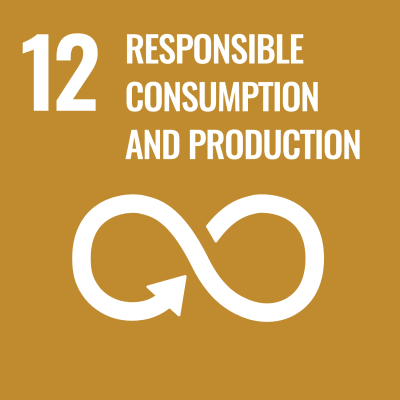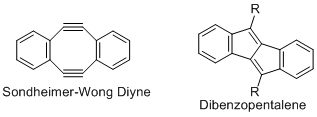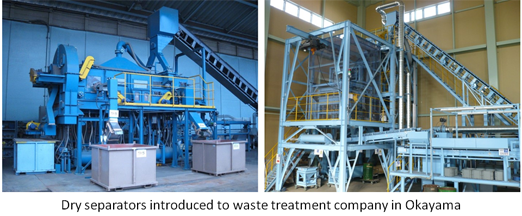-
Faculty of Engineering, Department of Applied Chemistry
- Professor
- Akihiro ORITA
- Research Field
Organic Chemistry, Organometallic Chemistry, Organic Materials
- Keyword(s)
Organic Synthesis, Acetylenes, Fluorescence, Solar Cells, Sulfones, Organostannanes
- Research theme
-
- Syntheses of novel expanded π-systems
- Syntheses of organic fluorescent and semi-conducting materials
- Syntheses of organic dyes for solar cells
- Syntheses of environmentally benign organotin catalysts and organic photocatalysts and their applications to organic syntheses
Outline of research activities


1. Organic light-emitting materials for OLEDs or dyes for OPVs are developed.

2. Novel antiaromatic compounds such as Sondheimer-Wong diynes and diarenopentalenes are developed as new types of organic materials.
3. Organic syntheses using organotin cluster as catalysts are developed.
- Desired cooperation
-
- Organic synthesis
- Organic materials
-
Faculty of Engineering, Department of Applied Chemistry
- Professor
- Hiroyuki HIRANO
- Research Field
Chemical Engineering, Transport Phenomena, Numerical Calculation
- Keyword(s)
Fluid flow and Heat transfer, Microreactor, Simulation
- Research theme
-
- Alternating flow in micro-channel
- Natural convection by temperature and/or concentration gradient
- Interfacial disturbance by Marangoni effect
- Solar energy storage by salinity-gradient solar pond
Outline of research activities

Numerical and experimental studies on transport phenomena, e.g. chemical reaction in beaker, indoor environment with air conditioner, natural environment, fluid flow and heat transfer in industrial equipment
■ patent number: 4931065
title of the invention: collision micro mixer
objective: increasing the chemical reaction efficiency by the collision of water and organic phases in the micro-channel
■ patent number 5504526
title of the invention: formation of slug flow with micro-reactor
objective: increasing the chemical reaction efficiency with the vortices generated by continuously changing the shapes of water and organic phases inside the micro-channel with zigzag wall
- Desired cooperation
-
- Development of high-efficiency micro-reacter
- Development of solar energy storage system
- Solution of the problem on transport phenomena
-
Faculty of Engineering, Department of Applied Chemistry
- Professor
- Jun OSHITANI
- Research Field
Chemical Engineering, Particle Technology
- Keyword(s)
Powder and Colloid
- Research theme
-
- Dry separation using gas-solid fluidized beds
- Advanced powder handling for chemical manufacturing
- Application of surfactant-free colloids
Outline of research activitiesPowder and colloid are important for manufacturing processes. We study on fundamentals and applications of powder and colloid to contribute to the manufacturing processes as engineers. For example, we developed dry separator using gas-solid fluidized beds for waste treatment and mineral processing.

- Desired cooperation
-
- Application of the dry separator
- Developing the new powder handling methods
- Application of the surfactant-free colloids
-
Faculty of Engineering, Department of Applied Chemistry
- Professor
- Makoto TAKEZAKI
- Research Field
Colloidal chemistry, Solution chemistry, Photochemistry
- Keyword(s)
Nanoparticles, Micelles, Photoinduced reactions, Absorption and emission spectroscopy
- Research theme
-
- Synthesis and characterizations of non-spherical nanoparticles
- Fluorescence enhancements by nanoparticles
- Photoinduced reaction on the micellar and vesicular systems
Outline of research activitiesMetal nanoparticles show unique properties that are different from those of bulk metals. These properties are dependent on their shapes and sizes. We prepare nanoparticles with various shapes and ones with narrow size distributions. Fluorescence intensities are enhanced at the acuate front ends of nanoparticles and/or at the gaps between nanoparticles. The protective agents of nanoparticles, such as ligands, polymers and surfactants, are exchanged for fluorophores easily to adsorb the surfaces of nanoparticles.
The photoinduced reactions on the micellar and vesicular systems and the properties of the micellar and vesicular systems are studied.
- Desired cooperation
-
- Syntheses of metal nanoparticles
- Characterizations of micelles, vesicles and aggregates
- Spectroscopic characterizations, etc.
-
Faculty of Engineering, Department of Applied Chemistry
- Professor
- Yoshihiro KUSANO
- Research Field
Inorganic Material Chemistry, Chemistry of Ceramics
- Keyword(s)
Ceramics, Transition Metal Oxides, Pottery and Porcelain, Bizen Stoneware
- Research theme
-
- Microstructure and Formation Mechanism of Japanese Traditional Ceramics
- Synthesis and Properties of Novel Transition Metal oxides
Outline of research activitiesThe characteristic reddish color pattern called hidasuki appears where the rice straw is in direct contact with the clay because the rice straw supplies potassium that reduces the melting point of the ceramic surface and thereby converts the contact area into a site for the interesting reactions to take place. The sticklike mullite (3(Al,Fe)2O3・2SiO2) particles, the major phase formed in the absence of rice straw, was replaced by corundum (α-Al2O3), hematite (α-Fe2O3), and others in the surface region of about 50 μm-thick. The corundum precipitated as hexagonal platelike crystals, and on the edges of these crystals the hematite grew epitaxially.

- Desired cooperation
-
- Microstructural observations of metals and ceramics
- Formation mechanizm of color patterns on pottery and Porcelain
-
Faculty of Engineering, Department of Applied Chemistry
- Professor
- Yoshiko MORIYAMA
- Research Field
Colloid and Interface Chemistry, Protein Chemistry
- Keyword(s)
Surfactant, Secondary Structure of Protein
- Research theme
-
- Interactions of Surfactants with Proteins and Polypeptides
- Interaction of Surfactants with Proteins Denatured by Urea and Heat treatment
Outline of research activities

The interactions of surfactants with proteins have been widely studied. Recently, an attention has been paid to the effects of surfactants on the secondary structural changes of proteins denatured by another denaturing factor.

- Desired cooperation
-
- Physicochemical Properties of Surfactant Solutions
- Secondary Structural Changes of Proteins
-
Faculty of Engineering, Department of Applied Chemistry
- Professor
- Yuichi KOGA
- Research Field
Biotechnology, Biochemistry, Bioproduction
- Keyword(s)
Protein, Enzyme, Microbe, Hyperthermophile
- Research theme
-
- Structure-function relationships of proteins from extremophiles.
- Polyethylene terephthalate (PET) degrading enzymes
- Industrial application of thermostable proteases, etc.
Outline of research activitiesOrganisms that can grow in a “extreme environment”, such as the high temperature environment, are called extremophiles. These organisms have unique biomolecules that are adapted to the environment in which they grow. A typical example are enzymes that catalyse most of chemical reactions in cells. General enzymes lose their molecular structure and function in high temperatures (e.g., 80°C), however hyperthermophiles, which can grow at 100°C, have enzymes with a unique structure that can maintain their function even at 100℃. Proteins from extremophiles can enable new chemical reactions that have not been possible with normal enzymes. We will conduct research to elucidate the structure and function of extremophiles, and apply them to industrial applications.

- Desired cooperation
-
- Isolating microorganisms and enzymes from local resources (fermented foods, unique environment etc.)
- Development of industrial application of enzymes.
- Bioproduction and biodegradation.
-
Faculty of Engineering, Department of Applied Chemistry
- Associate professor
- Naoki NAGATANI
- Research Field
Analytical chemistry, Biotechnology
- Keyword(s)
Biosensor, Micro・nanobioprocess
- Research theme
-
- Development of biosensor
- Development of sensor using electro chemistry
- Development of paper based biosensor
Outline of research activities
Biosensors using enzyme and antibody and biochips for using biosensor have been developed. For example, chemical agent sensor based on inhibition of enzyme activity and the RT-PCR biochip for rapid detection of COVID-19 have been studied.

- Desired cooperation
-
- Development of rapid and easy biosensor.
- Development of new sensor based on biological function
-
Faculty of Engineering, Department of Applied Chemistry
- Lecturer
- Ryosuke MAKI
- Research Field
Inorganic chemistry, Ceramic materials
- Keyword(s)
High-temperature structural materials, Iron oxides, Synroc
- Research theme
-
- Development of a new synthesis method forε-Fe2O3
- Investigation for new refractory materials
- Investigation of synroc solidification technique
Outline of research activities

Recently, ε-Fe2O3 has attracted interest because of its magnetic potentiality, but there are some difficulties to straightforwardly obtain the pure/single ε-Fe2O3 phase. We have found that ε-Fe2O3 crystallizes epitaxially on crystals of mullite in our study on a Japanese traditional stoneware called “Bizen” . Since the particle morphology of ε-Fe2O3 and the relative ε-Fe2O3-to-mullite crystallographic orientation strongly depend on the oxygen partial pressure during firing and the temperature range, the formation conditions is very complicated. We believe that elucidating the formation mechanism of ε-Fe2O3 will contribute to the development of novel magnetic materials.
We are also working on the development of Al-B-C high-temperature structural materials. Ternary metal borocarbides, Al3BC3, have been considered as promising candidates for lightweight structural components. We have succeeded in synthesizing hexagonal plate-like Al3BC3 particles by a simple synthesis method, and the sintered sample exhibited anisotropic mechanical properties and higher bending strength due to particle orientation. Currently, we are proceeding with various physical property measurements.- Desired cooperation
-
- Development of a new synthesis method forε-Fe2O3
- Investigation for new refractory materials
- Investigation of synroc solidification technique
-
Faculty of Engineering, Department of Applied Chemistry
- Lecturer
- Yasuhiro OKUDA
- Research Field
Organic Synthesis, Organometallic Chemistry, Theoretical Calculation
- Keyword(s)
Organic Synthesis, Reaction Design, Catalytic Transformation, Organic Material, Pharmaceutics
- Research theme
-
- Development of New Reactions Accelerated by Transition-Metal Catalysts
- Synthesis of Bioactive Compounds
- Design and Synthesis of Organic Materials
Outline of research activitiesOur laboratory focused on a phosphoryl (Ph2P(O)) group’s chemistry as an electron-withdrawing and removable protecting group on terminal alkynes, development of new reation and synthesis of functional molecules are currently investigated. For example, we demonstrated a process-controlled regiodivergent synthesis of triazole derivatives with bromo(phosphoryl)ethyne as common starting material, an alternative synthesis of commercially available pharmaceutical molecule was also succeeded (Org. Lett. 2020, 22, 5099–5103.)

 More recently, we synthesized novel π-extended aromatic amines from ynamine (= alkynylamine), and further applications to luminescence, photovoltaics and hole-transporting materials are in progress.
More recently, we synthesized novel π-extended aromatic amines from ynamine (= alkynylamine), and further applications to luminescence, photovoltaics and hole-transporting materials are in progress.
- Desired cooperation
-
- Organic sythesis, drug discovery and material design employing ynamine (= alkynylamine) as a common starting material














